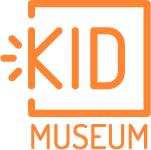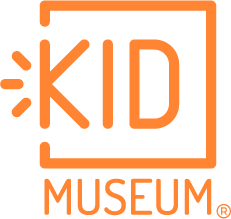Interest in maker-oriented learning is quickly gaining traction among educators, but many are unsure of how to incorporate making into their schools. KID Museum’s Community Conversation: Bringing Maker Education to Our Schools brought together parents and educators from across the region to discuss strategies and to hear from three schools who have successfully integrated making into the school day.
School Librarian, Nan Stifel, and Director of Educational Technology, Karen Opdahl, both of Concord Hill School created a makerspace in their school library. Daily, grade-appropriate maker activities are punctuated by large-scale “challenges”–for example, the Voting Booth Challenge, where each grade built a component of a voting booth, complete with an operational green light that goes on when the booth is ready for a voter. The school used their voting booth in a mock election. Said Stifel, rather than libraries being places where children consume knowledge, “hands-on learning allows kids to literally construct knowledge.” See Stifel and Opdahl’s Makerspace Resource List.
Lisa Hack, the Media Specialist at Silver Spring International School, converted their school library into a makerspace for middle-schoolers. Silver Spring International is a public school, and Hack faced some funding challenges. She set up the space with a lego wall, a green screen, duct tape and other craft materials, and a selection of electronics. Each year, more gets added.
Hack teamed up with ESOL teacher Lisa Labbate to bring maker projects to ESOL students. Labbate described how her students built an obstacle course for Sphero, a robotic ball. They learned how to calibrate the robot while gaining English vocabulary words like robot, tablet, ramp, and calibrate. Combining maker activities with learning English has proved extremely successful, and Labbate and Hack continue to create these opportunities for the ESOL students.
Josh Ajima is the Technology Resource Teacher for Dominion High School in Virginia, the winner of the US Department of Education CTE Challenge. Ajima described his approach as the “stone soup model of makerspaces,” meaning that he jumped right into making and creating a makerspace, and then added the necessary ingredients along the way. Ajima’s step-by-step guide is available here.
Whether a public or private school, elementary, middle, or high, the most important element for creating a makerspace is school and community support. KID Museum is now a hub for helping to create makerspaces within schools, as part of Making Spaces, a new national initiative. We’ll select 5 – 10 schools to launch a crowdfunding campaign, and will provide professional development around making.
As KID Museum founder, Cara Lesser describes it, maker education is about “activating learners in a way you don’t see during the typical school day.”





